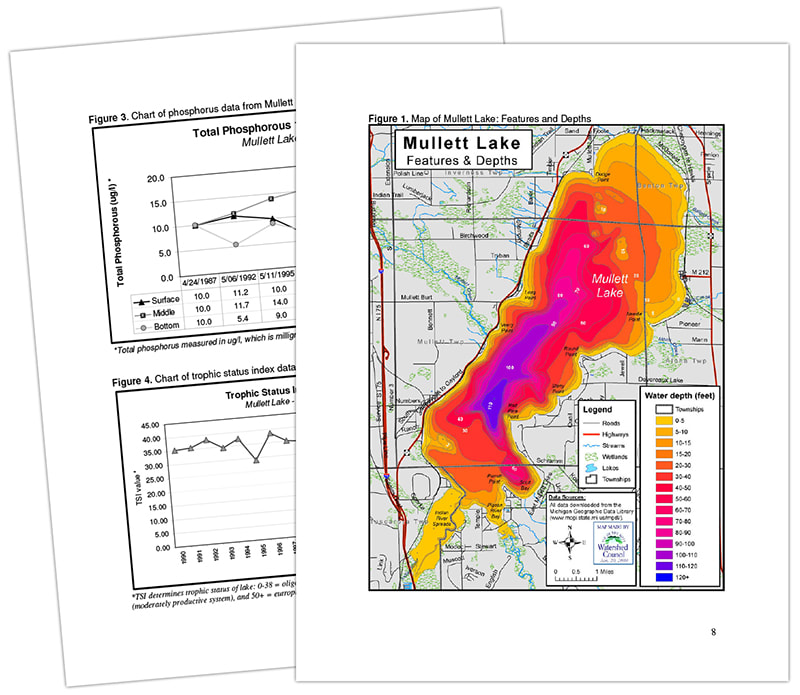Monitoring Programs
|
For more than 30 years, the Watershed Council has worked with local residents to keep a watchful eye on Northern Michigan’s waters. Hundreds of volunteers have graciously devoted time and energy to our volunteer lake and stream monitoring programs, gathering data at 97 sites on 56 different lakes and streams. This priceless information is used by the Watershed Council and others to evaluate the health of our lakes and streams, identify trends, develop watershed management plans, and much, much more.
The Watershed Council has four main monitoring programs: |
Water Quality Monitoring Services
Lake Monitoring Services
Lake associations and other organizations call upon the Watershed Council to monitor water quality for myriad reasons ranging from baseline data collection to specific pollutant concerns. The Watershed Council has the expertise and equipment to monitor lakes of all sizes and depths, and at any time of the year. Our multi-parameter probe allows for measuring dissolved oxygen, pH, conductivity, and water temperature throughout the water column without incurring additional costs to the monitoring project. Due to our collaborative relationship with the University of Michigan Biological Station, we are able to provide water analyses at very reasonable rates for a variety of parameters, including nutrients (phosphorus, nitrogen, carbon), sediments (suspended solids), chloride, and chlorophyll. However, our services are not limited to these parameters; we have monitored for metals, oil, and grease, but can also check for other contaminants of concern, such as pesticides and polycyclic aromatic hydrocarbons.
Lake associations and other organizations call upon the Watershed Council to monitor water quality for myriad reasons ranging from baseline data collection to specific pollutant concerns. The Watershed Council has the expertise and equipment to monitor lakes of all sizes and depths, and at any time of the year. Our multi-parameter probe allows for measuring dissolved oxygen, pH, conductivity, and water temperature throughout the water column without incurring additional costs to the monitoring project. Due to our collaborative relationship with the University of Michigan Biological Station, we are able to provide water analyses at very reasonable rates for a variety of parameters, including nutrients (phosphorus, nitrogen, carbon), sediments (suspended solids), chloride, and chlorophyll. However, our services are not limited to these parameters; we have monitored for metals, oil, and grease, but can also check for other contaminants of concern, such as pesticides and polycyclic aromatic hydrocarbons.
|
River/Stream Monitoring Services
Rivers and streams flow into the region’s lakes, supplying vital water, nutrients, and minerals. Most streams in the area are clean and healthy, but almost all are impacted in one way or another by human activity. Sediments and auto-related contaminants wash in at road stream crossings, malfunctioning septic systems contaminate shallow groundwater that migrates to streams, and fertilizers and animal wastes from agriculture and residential areas are carried into streams via stormwater runoff. These contaminants not only degrade water quality of the rivers and streams, but of lakes that they flow into as well. The Watershed Council has provided stream water quality monitoring services to lake associations due to concerns about pollution coming in from other parts of the watershed. The Mullett Lake Area Preservation Society sponsored a three-year study of the water quality and pollutant loadings from tributaries flowing into Mullett Lake |
Other groups have contracted with the Watershed Council to collect baseline data in streams that are potentially threatened by industrial activities, such as hydraulic fracturing for oil and gas extraction.





